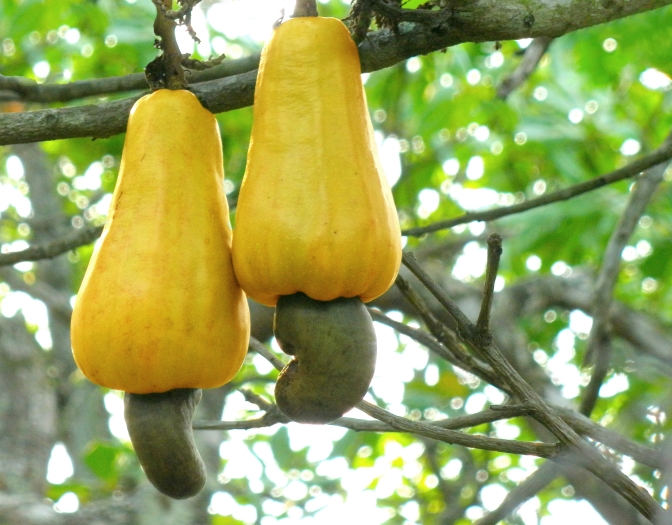Cashew Tree
(Anacardium occidentale)
Cashew Tree (Anacardium occidentale)
/
/

Abhishek Jacob
CC BY-SA 3.0










































































Estimated Native Range
Summary
The Cashew Tree is valued for its nuts, which are a popular culinary ingredient, and the cashew apple, which can be eaten fresh or used in beverages. It is also grown for shade and ornamental purposes in tropical climates. The tree prefers well-drained sandy or loamy soils and requires a full sun position. It is drought-tolerant once established but sensitive to frost. In cultivation, it is important to note that the raw cashew nuts contain urushiol, which is also found in poison ivy and can cause skin irritation or allergic reactions. Therefore, cashew nuts must be handled properly and roasted before consumption. Anacardium occidentale can become invasive in some regions outside its native range, so it is essential to check local regulations before planting.CC BY-SA 4.0
Plant Description
- Plant Type: Tree
- Height: 20-46 feet
- Width: 20-40 feet
- Growth Rate: Slow
- Flower Color: N/A
- Flowering Season: Spring, Winter
- Leaf Retention: Evergreen
Growth Requirements
- Sun: Full Sun
- Water: Medium
- Drainage: Fast
Common Uses
Bee Garden, Bird Garden, Butterfly Garden, Drought Tolerant, Edible*Disclaimer: Easyscape's listed plant edibility is for informational use. Always verify the safety and proper identification of any plant before consumption.
Natural Habitat
Tropical rainforests, savannahs, and dry deciduous forests in the Northern Amazon Basin and Northeastern Brazil
Other Names
Common Names: Cashew , Cashewnut , Acajubaum , Kaschubaum , Nierenbaum , Anacardo , Cajuil , Merey , Marañón , Anacardier
Scientific Names: Anacardium occidentale , Anacardium microcarpum , Anacardium othonianum , Anacardium amilcarianum , Anacardium kuhlmannianum , Anacardium curatellaefolium , Anacardium rondonianum , Anacardium occidentale var. gardneri , Anacardium occidentale var. americanum , Acajuba occidentalis
GBIF Accepted Name: Anacardium occidentale L.